Business goes far beyond closing a one-time deal with a lead.
Today, it’s more about building a relationship with the audience to boost customer lifetime value.
This is the duration of your fruitful relations or, put simply, the time someone stays with your brand and buys from you.
To build that partnership and enjoy the benefits for months or even years to come, you have to pay attention to customer engagement throughout every stage of the customer lifecycle journey.
This is not about sales. This is brand-building.
In this article, we’ll guide you through each of those stages, revealing the secrets to keeping your audience engaged at all times.
The result? Loyal customers that don’t want to shop anywhere else!
What Is Customer Engagement?

Let’s start with the basics.
Customer engagement is a set of actions and procedures businesses use to build strong relationships with their customers built on trust.
You can achieve it through marketing campaigns, interesting content covering the audience’s concerns and informational needs, social media outreach, ads and communication.
This may sound difficult, but if you adopt a holistic approach and focus on honest communication, the rest falls into place.
Just as in any relationship, right?
The goal is to make a strong connection so that people gladly engage with your brand and pay attention, boost awareness, advocate for you.
In modern markets, the value of a business should go further than high-quality products and services.
If you want customers to stick around, you have to show them your human side, offer support, valuable information, and constant communication throughout the customer journey.
Become reliable guides on that journey, and the benefits you’ll then receive as gratitude will be the fuel to your growth.
What is the Customer Lifecycle Journey?
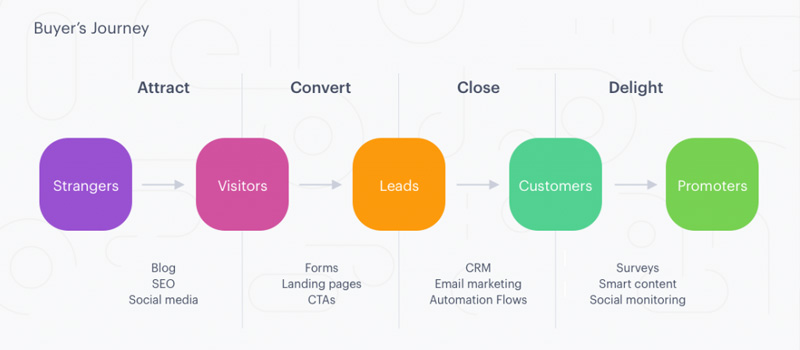
Now, more about the journey.
The customer lifecycle journey (also knows as the buyers journey) is when first-time customers become aware of your business, buy from you, and continue buying from you.
The longer the life cycle extends beyond the first purchase, the more value per customer to your brand.
And not only that.
Some loyal customers become advocates for your brand, encouraging their friends, relatives, and social media followers to get familiar with your company, products, and services.
There are many customer lifecycle stages, and each one is different, depending on challenges at hand and the information people need and search for.
Providing the information your customers need, earns trust and influences perceptions.
PRO Brand Strategy BluePrint
Build Brands Like A Pro Brand Strategist

The Value Of Experiential Design In The Customer Lifecycle Journey

Did you know that increasing customer loyalty to your brand by only 7% can increase customer lifetime value by 85%?
To do this, you have to engage people differently at each stage.
If you offer a 3-hour webinar to a person going through the awareness stage (the first one), they will bolt very quickly.
That’s too much of a time investment for someone not sure what you’re doing.
Why?
Because this is the stage where you should provide interesting information concisely and raise awareness for your business and products, sparking curiosity.
Social media posts, ads, and reviews are perfect for this stage.
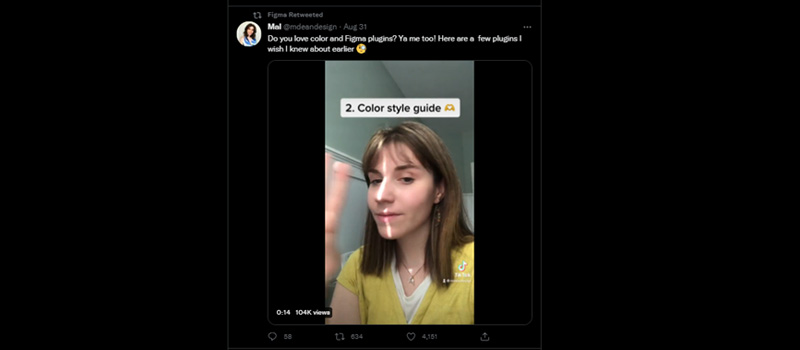
For example, Figma is a collaborative interface design tool
If followers interested in Figma jump on Twitter, they’ll see the brand retweeting their users’ hacks and design works.
Short, exciting tweets from software users make the exploration more engaging and encourage others to come on board.
But during the consideration stage…
It’s more important to provide more in-depth information.
Blog posts, videos, How-to’s all engage the visitors.
Use Live Chat to gather information, provide links to key pages, offer a lead magnet in exchange for an email, for example.
As you can see, each life cycle stage is different in your customer engagement strategy.
In other words, how to engage visitors matters a lot.
Explore Brand Strategy
Programs & Tools
Customer Engagement Considerations For Each Stage Of Customer Lifecycle Journey
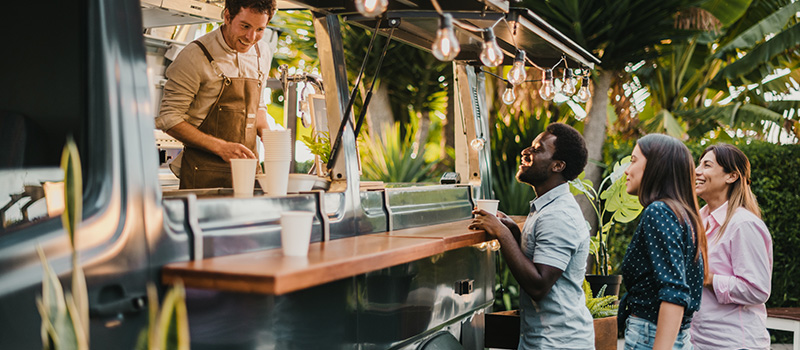
Let’s explore some different engagement approaches to each stage of the customer lifecycle.
Awareness Stage

The awareness stage is the first stage where you create the first impression. Your goal is to attract leads and show them your products and services, as well as their value.
You must create the sense that people need your product from the beginning for them to want to get it for themselves.
Here are some practical approaches:
SEO
Search engine optimization will help you pop up in users’ search results organically (free of charge).Research keywords popular among your audience, create high-quality content and build links from relevant websites.
You will need an SEO keyword tool like the one SE Ranking offers.
It will analyse your keywords, offer relevant suggestions, and show you how easy it will be to rank for the query you want to use.
This will help you create better content that resonates with your audience and, eventually, get references from high-authority websites in your niche.
Social media
Find your audience on social media, create targeted ads, gain followers, and connect with them.Help them to learn more about your brand, answer questions and go deeper into the sales funnel.
Targeted ads
Google Ads will show your website before the first organic result, which may turn more attention to your landing page, blog post, etc.Use the data from your ads (both on social media and Google) for retargeting – show up in the feeds of people who already interacted with your campaigns, content, etc., to nurture leads.
Influencers
Find influencers in your niche to collaborate with.This is a form of both affiliate and word-of-mouth marketing, which is one of the most effective marketing techniques.
88% of consumers say they trust word-of-mouth recommendations more than regular ads.

For example, you can use social media targeted ads to reach out to your target audience on Instagram.
We’ve all seen these integrated with Stories of our friends, right?
You could create an aesthetic picture showing your product or a video of someone using it and describing its benefits.
One of the most effective methods is to use a review from an influencer your target audience follows.
Creating partnerships with such influencers exposes your brand to their followers who often take their word as gospel.
Want a pro tip?
Don’t forget about micro and nano-influencers.
They don’t have such a large following, but they are closer to their audience and often have more engagement, trust and influence.
Acquisition Stage

At this stage, your goal is to turn aware visitors into leads.
Did you know that the average cart abandonment rate is 69.99%?
This often happens due to a lack of information about:
The brand
The products and services
Ordering, delivery, return, etc.
What other people think about the brand
and more.
Every case is different, so you should find out what’s important for your customers.
- What are their interests?
- Their buyer motivations?
- What about their pain points?
- And where do they go to find information?
You have to engage them at this stage with information such as:
Educational campaigns in the blog
Showcase your product as a solution for the problems of your leads. Upload tutorials, case studies, etc.
Influencer material
Show your visitors how people they know and/or experts in the industry use your products and services, what issues they solve, and what they have to say about them.
Customer reviews
Share reviews, showing that regular people like your buyers use your products easily and, again, solve their problems.A UGC (user-generated content) campaign will work very well here. For example, ask your existing customers to share a video or photo with a caption about their purchases for a discount.
Free trials
Finally, offer a free trial of your product or service (if possible) in exchange for an email, for instance, to achieve two goals at once – potential conversion and a new subscriber.
As a result, people satisfy their curiosity with information about your brand and products, and they see that other Internet users bought from you and liked the items.
They then come back to their carts and potentially make the purchase. You win!
Conversion Stage
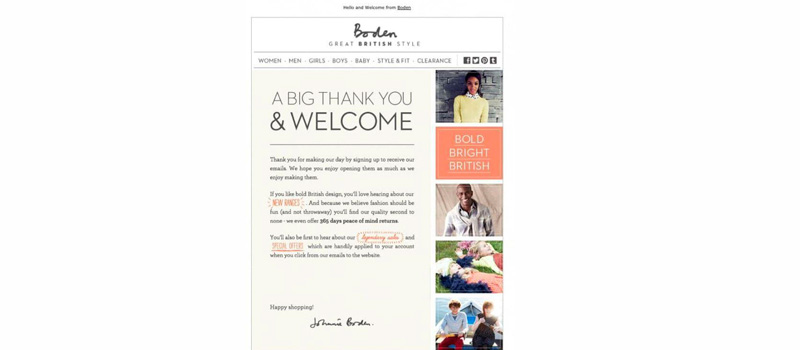
The next stage in our customer lifecycle journey guide is the conversion stage, where the first purchase happens.
Your goal here is to sell not only your product or service but also the relationship you already have with the prospect.
Add some romance here!
So, at this stage, it’s wise to promote customer onboarding to ensure and extended and engaged brand experience.
Nowadays, consumers are looking for brands that will consider them partners, someone important in the company’s life, not just buyers.
At this point, to improve engagement, you should try:
Making the billing process as smooth and easy as possible.
You can also put some additional offers on the billing page to increase curiosity.
Chat support where the buyer can find out all the order details whenever a question comes to mind.
Personalized communication in the chat and emails will make the person feel heard and supported by the brand, which increases trust and alleviates any fears of buyer remorse.
Widgets with useful documents and self-help resources giving the customer the feeling of safety as all the needed information is available to them.
A well-designed welcome email goes a long way.
As the person transitions from the acquisition to conversion stage, offering a discount for the first order is wise to speed things up.
Retention Stage
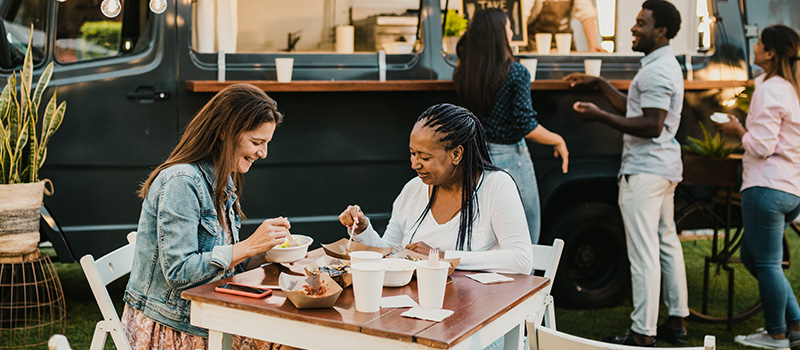
At this point of the customer engagement lifecycle, you want to find out how they feel.
It’s time to show your post-purchase support by asking how the customer is enjoying your product and if they have anything to tell you about it.
Your goal is to keep the conversation going.
Why is this important?
Because when you increase retention by 5%, your profits may rise from 25% to 95%!
Here are some tactics you can use at this stage to engage customers:
Adopt customer service tools. Use a CRM system to gather feedback and customer data to improve your experience.
If something is wrong with the product or customer service, sincerely apologize and offer a bonus.
Personalize the experience.
Let your customers know that you see each of them and are grateful for their help in the improvement and growth of your business.
Show how you’re different.
Distinguish your business from the competition and prove that you are better and more convenient for the customers.
For example, if the customer didn’t quite enjoy the experience and left a review about it, don’t shy away from it.
Apologize, tell them you’re trying your best to grow, and you’d love to make it up to them.
Offer a discount for the next order.
Don’t be too aggressive, but make sure the information gets to the customer. Use social media, compelling images and videos, and excellent scannable copy.
Loyalty Stage

This is the most pleasant for businesses (if successful) of all stages of the customer lifecycle.
Now they have loyal customers who may recommend the company to their friends, family, followers, etc., thus spreading awareness and starting many other customer cycles.
Your goal here is to understand your buyers’ experience, find out how they are using your products and how you can inspire them to continue buying from you and not switch to a competitor.
The best you can do is increase engagement via your products. Make more appealing offers, give discounts to the most loyal customers, and create a reward system they can enjoy.
Be more creative!
For example, you send a gift to your most loyal customers, a tester kits or beta versions as an example.
If they like it, they can buy the full versions at an exclusive V.I.P discount.
Over To You
Customer engagement through the stages of the customer lifecycle journey varies.
You need to use different approaches, such as SEO, email marketing, customer rewards, influencer marketing, live chats, personalization, and more.
Apologize when you mess up, be honest and transparent, and always communicate to your customers if you want them to stay.
Make them feel special, and they will come back to you to buy again and again.
On-Demand Digital Program
Brand Master Secrets
Make the transition from hired-gun to highly valued brand strategist in less than 30 days. The systems, frameworks and tools inside this comprehensive program are all you need to level up.








